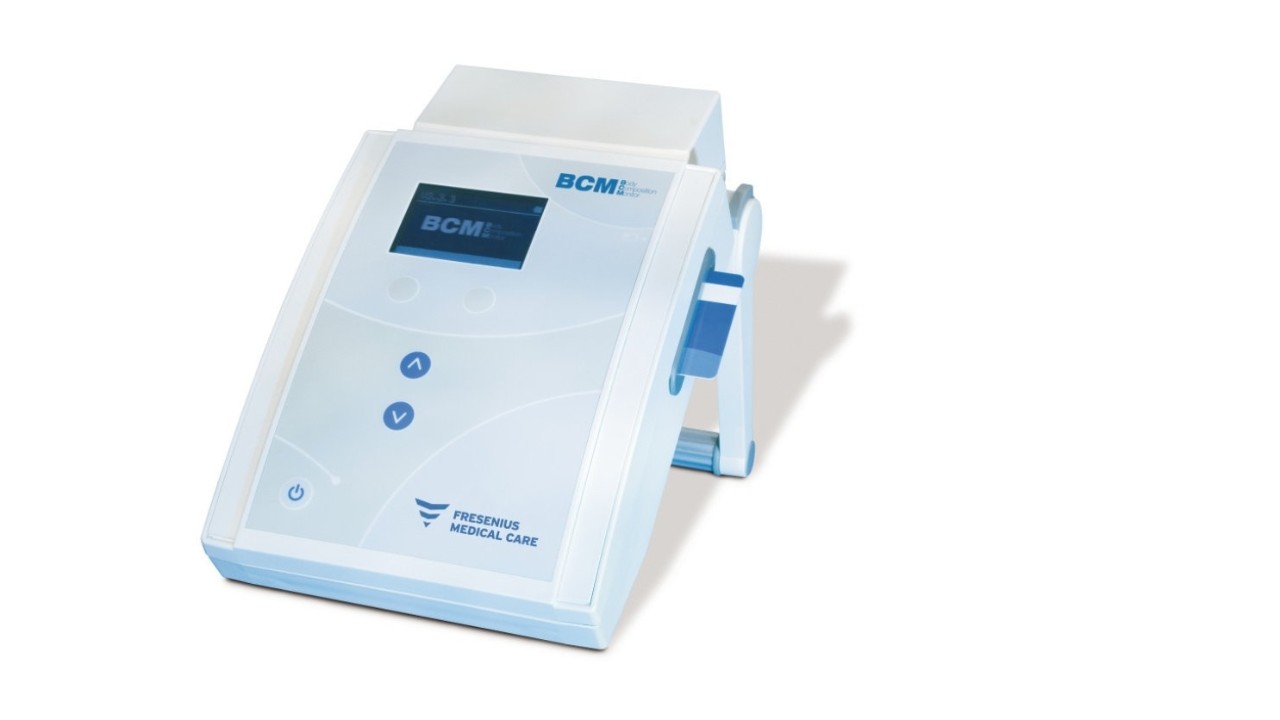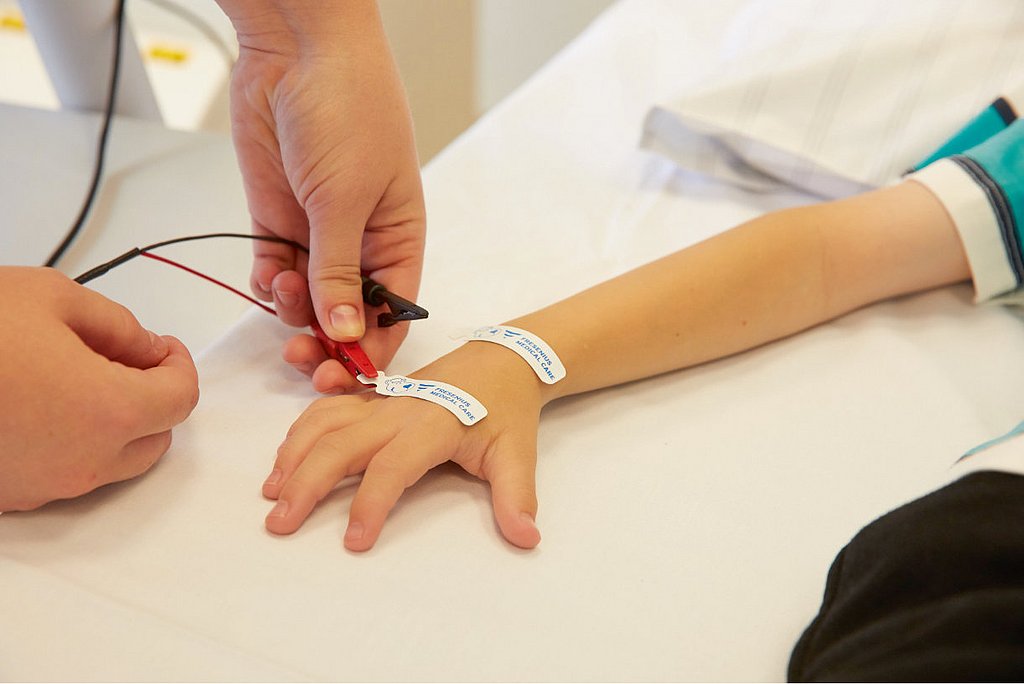BCM - Body Composition Monitor
Why determining the fluid status can be challenging
In standard clinical practice, a patient’s dry weight or target weight is an estimate which is determined by the clinical observation of various indications, including the presence of oedema, the blood pressure values and shortness of breath. The frequent occurrence of comorbidities in hemodialysis patients can make the signs of fluid status ambiguous, however.1
Where the BCM - Body Composition Monitor can support
The BCM - Body Composition Monitor was specifically designed to determine the amount of fluid overload that arises in patients suffering from renal failure. This allows for a simple, non-invasive and objective assessment of an individual patient’s fluid status.2
As a result, the BCM - Body Composition Monitor may help the clinician to determine a patient’s individual dry weight more accurately and, as a result, to remove the correct amount of fluid.
Advantages of bioimpedance-guided Fluid Management
The BCM - Body Composition Monitor allows for the practical and accurate determination of the fluid status in contrast to alternative assessment methods.3
Assessing the fluid status with the BCM - Body Composition Monitor:
- Is non-invasive, simple and fast (approx. 10 sec. for pure measuring process)
- Is highly reproducible4, 5
- Validated against standard reference methods5
- Is possible with HD, PD and pediatric patients
- Can be used for a more accurate dialysis dose assessment by providing the urea distribution volume as an input on the Online Clearance Monitor of most HD devices from Fresenius Medical Care6
- The BCM - Body Composition Monitor provides a quantitative measure of lean tissue and fat tissue mass because it is able to distinguish muscle mass from fluid overload. This allows for an improved diagnosis of malnutrition in ESRD patients7 and allows for an adequate therapy intervention
The technology behind the BCM - Body Composition Monitor
The BCM - Body Composition Monitor applies the Bioimpedance Spectroscopy (BIS) technique.
To obtain the clinically-relevant output parameters, two advanced validated physiological models are used in the BCM - Body Composition Monitor:
- A volume model which describes the electrical conductance in a cell suspension, enabling the total body water and extracellular water as well as the Intracellular Water (ICW) to be calculated.5
- A body composition model calculating the three principal body components of Overhydration (OH), Lean Tissue Mass (LTM) and Adipose Tissue Mass (ATM) from the ECW and TBW information.13
| Especially validated for ESRD patients | Suitable for HD & PD patients | Over 29,000 patients measured* | Appropriate for pediatric patients |
|---|
Especially validated for ESRD patients
Suitable for HD & PD patients
Over 29,000 patients measured*
Appropriate for pediatric patients
* in NephroCare clinics each month in 201517
Technical Data

BCM - Body Composition Monitor Technical data
PDF, 1 MB1 Lindley et al., Management of fluid status in haemodialysis patients: the roles of technology and dietary advice. Technical Problems in Patients on Hemodialysis (2011), http:/cdn.intechopen.com/pdfs/24619.pdf
2 National Institute for Health Research Devices for Dignity Healthcare Technology Co-operative, Assessment of fluid status using Body Composition Monitoring (BCM), “unpublished data on file, 2019”.
3 Hecking et al., Significance of interdialytic weight gain versus chronic volume overload: consensus opinion. Am J Nephrol (2013); 38 (1): 78-90.
4 Wabel et al., Reproducibility of bioimpedance spectroscopy ( BIS ) in health and disease (abstract), (2004). Nephrology Dialysis Transplantation, Volume 22, Issue suppl_6, 1 July 2007, Pages vi9–vi137.
5 Moissl et al., Body fluid volume determination via body composition spectroscopy in health and disease. Physiol. Meas (2006); 27: 921-933.2.
6 Ahrenholz et al., Determination of Dialysis Dose: A Clinical Comparison of Methods. Blood Purif (2011); 32:271-277.
7 Marcelli et al., Body Composition and Survival in Dialysis Patients: Results from an International Cohort Study, Clin J Am Soc Nephrol (2015); 10(7):1192-1200.
8 Wizemann et al., The mortality risk of overhydration in haemodialysis patients, Nephrol Dial Transplant (2009); 24: 1574-1579.
9 Assimon et al., Ultrafiltration Rate and Mortality in Maintenance Hemodialysis Patients, Am J Kidney Dis (2016); 68(6): 911-922.
10 Onofriescu et al., Bioimpedance-Guided Fluid Management in Maintenance Hemodialysis: A Pilot Randomized Controlled Trial, Am J Kidney Dis. (2014); 64(1): 111-118.
11 Onofriescu et al., Overhydration, Cardiac Function and Survival in Hemodialysis Patients. PLoS ONE (2015); 10 (8): e0135691.
12 Machek et al., Guided optimization of fluid status in haemodialysis patients. Nephrol Dial Transplant (2010); 25 (2): 538-544.
13 Chamney et al., A whole-body model to distinguish excess fluid from the hydration of major body tissues. Am J Clin Nutr (2007); 85: 80-89.
14 Wabel et al., Importance of Whole-Body Bioimpedance Spectroscopy for the Management of Fluid Balance. Blood Purification (2009);27(1): 75-80.
15 Lindley et al., A ward-based procedure for assessment of fluid status in peritoneal dialysis patients using bioimpedance spectroscopy. Perit Dial Int 2005; 25(S3): S46–S48.
16 Zaloszyc et al., Hydration measurement by bioimpedance spectroscopy and blood pressure management in children on hemodialysis. Peadiatric Nephrology (2013); 28(11) 2169-2177.
17 Moissl et al., Combined Target Ranges for Blood Pressure and Fluid Overload J Am Soc Nephrol (2015); 26 68A.


